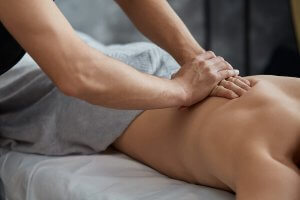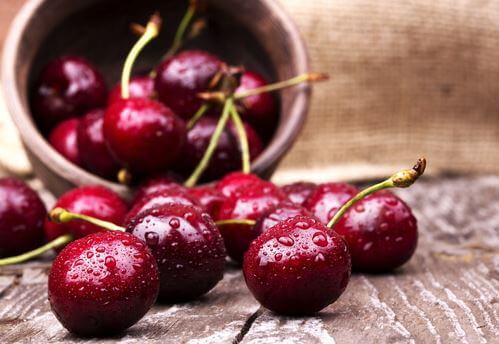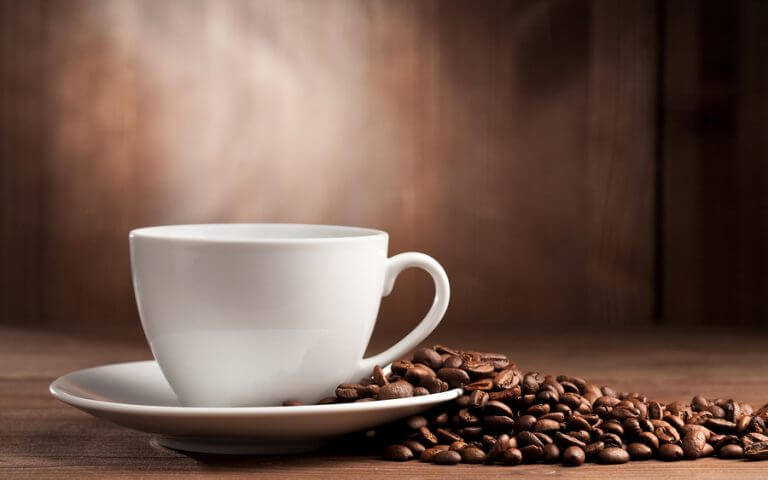Effective Tricks to Alleviate Muscle Soreness

After a tough training session, it’s normal to feel discomfort in your body. The best thing you can do is take measures to alleviate that muscle soreness, especially for your health and well-being. Practice the tricks that we’ll share with you in this article!
Whenever we do intense exercises, especially the ones involving weights, our muscles suffer from microscopic tears. Our bodies then repair these tears and the muscle fibers grow as a consequence. This means they adapt to face the new demands.
This recovery process happens every time after a workout. That’s why muscles tend to feel sore after you exercise.
The pain can make it difficult to perform any kind of movement that involves contracting that muscle. But don’t worry, there are many tricks that you can use to fight and alleviate muscle soreness!
How to alleviate muscle soreness
1. Stretch your muscles
Stretching exercises are a great alternative to alleviate pain. When you work out, the muscle fibers contract and become shorter. On the contrary, when you stretch your body, it’s possible to elongate those muscle fibers and promote their mobility for a faster recovery.
Stretching also increases your blood flow and brings oxygen to your muscles. Therefore, doing a short stretching routine after you finish your workout can make the recovery period a little bit less painful.
2. Cherries to alleviate muscle soreness
Even though it may seem impossible, cherries and raspberries are agents that help to fight muscle pain. A study published in the Scandinavian Journal of Medicine and Science in Sports determined that athletes who drank fresh cherry juice days before and on the same day of their training suffered from less muscle soreness.

Likewise, these athletes also showed signs of improvement in their muscle repair processes. All of this happens because cherries and raspberries are rich in antioxidant compounds and anthocyanin, important elements to decrease inflammation in the muscles.
Drinking cherry juice or even eating the fruit directly can help to alleviate the muscle tension you experience after exercising. They’re also a great source of antioxidants, which will benefit you in many aspects.
3. Foam roller
Foam rollers are much more valuable than you may imagine. For example, they can facilitate the task of alleviating muscle tension, reducing the pain and improving your performance in the next training session.
According to the International Journal of Sports Physical Therapy, using a foam roller correctly can alleviate muscle soreness effectively. You can even use the foam roller to warm up before training and to stretch afterward.

4. Keep moving
When people feel muscle pain, they try to avoid moving as much as possible. However, moving is exactly what your body needs to alleviate the pain. Doing yoga, Pilates or going for a walk are good options to keep moving without demanding too much from your muscles.
According to a study from 2012, recovery workouts favor the muscle recovery process in a natural way. Through lymphatic drainage, the movement of immune cells and the elimination of inflammatory mediators, our body doesn’t experience such an intense pain after working out.
5. Massages to fight muscle soreness
Massages can help you relax and feel better. In the same way, getting massages regularly can help your body to increase its ability to fight muscle soreness.
On the other hand, muscles that receive massages more frequently have more blood vessels than those that don’t. This makes a huge difference in the recovery process. That’s why, after an exhaustive work out session, it’s a great idea to have a massage or do one yourself using oils or body lotions.

6. A good cup of coffee
Caffeine is a component with several pros and cons for athletes. In this case, it’s an excellent ally to alleviate the pain because it contains analgesic properties. That’s exactly why caffeine is an active ingredient in some pain killers.
Therefore, it’s worth drinking one or two cups of coffee before working out. Coffee doesn’t cause dehydration, but it’s still important to drink enough water. Always remember that hydration plays a huge role if you want to avoid muscle soreness.
This ailment can definitely be an obstacle for your daily activities. The best thing you can do is try anything in your realm of possibilities to alleviate the pain and keep your muscles in a good state.
After a tough training session, it’s normal to feel discomfort in your body. The best thing you can do is take measures to alleviate that muscle soreness, especially for your health and well-being. Practice the tricks that we’ll share with you in this article!
Whenever we do intense exercises, especially the ones involving weights, our muscles suffer from microscopic tears. Our bodies then repair these tears and the muscle fibers grow as a consequence. This means they adapt to face the new demands.
This recovery process happens every time after a workout. That’s why muscles tend to feel sore after you exercise.
The pain can make it difficult to perform any kind of movement that involves contracting that muscle. But don’t worry, there are many tricks that you can use to fight and alleviate muscle soreness!
How to alleviate muscle soreness
1. Stretch your muscles
Stretching exercises are a great alternative to alleviate pain. When you work out, the muscle fibers contract and become shorter. On the contrary, when you stretch your body, it’s possible to elongate those muscle fibers and promote their mobility for a faster recovery.
Stretching also increases your blood flow and brings oxygen to your muscles. Therefore, doing a short stretching routine after you finish your workout can make the recovery period a little bit less painful.
2. Cherries to alleviate muscle soreness
Even though it may seem impossible, cherries and raspberries are agents that help to fight muscle pain. A study published in the Scandinavian Journal of Medicine and Science in Sports determined that athletes who drank fresh cherry juice days before and on the same day of their training suffered from less muscle soreness.

Likewise, these athletes also showed signs of improvement in their muscle repair processes. All of this happens because cherries and raspberries are rich in antioxidant compounds and anthocyanin, important elements to decrease inflammation in the muscles.
Drinking cherry juice or even eating the fruit directly can help to alleviate the muscle tension you experience after exercising. They’re also a great source of antioxidants, which will benefit you in many aspects.
3. Foam roller
Foam rollers are much more valuable than you may imagine. For example, they can facilitate the task of alleviating muscle tension, reducing the pain and improving your performance in the next training session.
According to the International Journal of Sports Physical Therapy, using a foam roller correctly can alleviate muscle soreness effectively. You can even use the foam roller to warm up before training and to stretch afterward.

4. Keep moving
When people feel muscle pain, they try to avoid moving as much as possible. However, moving is exactly what your body needs to alleviate the pain. Doing yoga, Pilates or going for a walk are good options to keep moving without demanding too much from your muscles.
According to a study from 2012, recovery workouts favor the muscle recovery process in a natural way. Through lymphatic drainage, the movement of immune cells and the elimination of inflammatory mediators, our body doesn’t experience such an intense pain after working out.
5. Massages to fight muscle soreness
Massages can help you relax and feel better. In the same way, getting massages regularly can help your body to increase its ability to fight muscle soreness.
On the other hand, muscles that receive massages more frequently have more blood vessels than those that don’t. This makes a huge difference in the recovery process. That’s why, after an exhaustive work out session, it’s a great idea to have a massage or do one yourself using oils or body lotions.

6. A good cup of coffee
Caffeine is a component with several pros and cons for athletes. In this case, it’s an excellent ally to alleviate the pain because it contains analgesic properties. That’s exactly why caffeine is an active ingredient in some pain killers.
Therefore, it’s worth drinking one or two cups of coffee before working out. Coffee doesn’t cause dehydration, but it’s still important to drink enough water. Always remember that hydration plays a huge role if you want to avoid muscle soreness.
This ailment can definitely be an obstacle for your daily activities. The best thing you can do is try anything in your realm of possibilities to alleviate the pain and keep your muscles in a good state.
All cited sources were thoroughly reviewed by our team to ensure their quality, reliability, currency, and validity. The bibliography of this article was considered reliable and of academic or scientific accuracy.
- Howatson, G., McHugh, M. P., Hill, J. A., Brouner, J., Jewell, A. P., Van Someren, K. A., … Howatson, S. A. (2010). Influence of tart cherry juice on indices of recovery following marathon running. Scandinavian Journal of Medicine and Science in Sports, 20(6), 843–852. https://doi.org/10.1111/j.1600-0838.2009.01005.x
- Cheatham, S. W., Kolber, M. J., Cain, M., & Lee, M. (2015). THE EFFECTS OF SELF-MYOFASCIAL RELEASE USING A FOAM ROLL OR ROLLER MASSAGER ON JOINT RANGE OF MOTION, MUSCLE RECOVERY, AND PERFORMANCE: A SYSTEMATIC REVIEW. International Journal of Sports Physical Therapy, 10(6), 827–38. https://doi.org/10.12968/ijtr.2014.21.12.569
- Tufano, J. J., Brown, L. E., Coburn, J. W., Tsang, K. K. W., Cazas, V. L., & Laporta, J. W. (2012). Effect of aerobic recovery intensity on delayed-onset muscle soreness and strength. Journal of Strength and Conditioning Research, 26(10), 2777–2782. https://doi.org/10.1519/JSC.0b013e3182651c06
- Hurley, C. F., Hatfield, D. L., & Riebe, D. (2013). The Effect of Caffeine Ingestion on Delayed Onset Muscle Soreness. Journal of Strength and Conditioning Research, 1. https://doi.org/10.1519/jsc.0b013e3182a99477
- Cleary, M. A., Sitler, M. R., & Kendrick, Z. V. (2006). Dehydration and symptoms of delayed-onset muscle soreness in normothermic men. Journal of Athletic Training, 41(1), 36–45.
- Hurley, C. F., Hatfield, D. L., & Riebe, D. (2013). The Effect of Caffeine Ingestion on Delayed Onset Muscle Soreness. Journal of Strength and Conditioning Research, 1. https://doi.org/10.1519/jsc.0b013e3182a99477
This text is provided for informational purposes only and does not replace consultation with a professional. If in doubt, consult your specialist.








